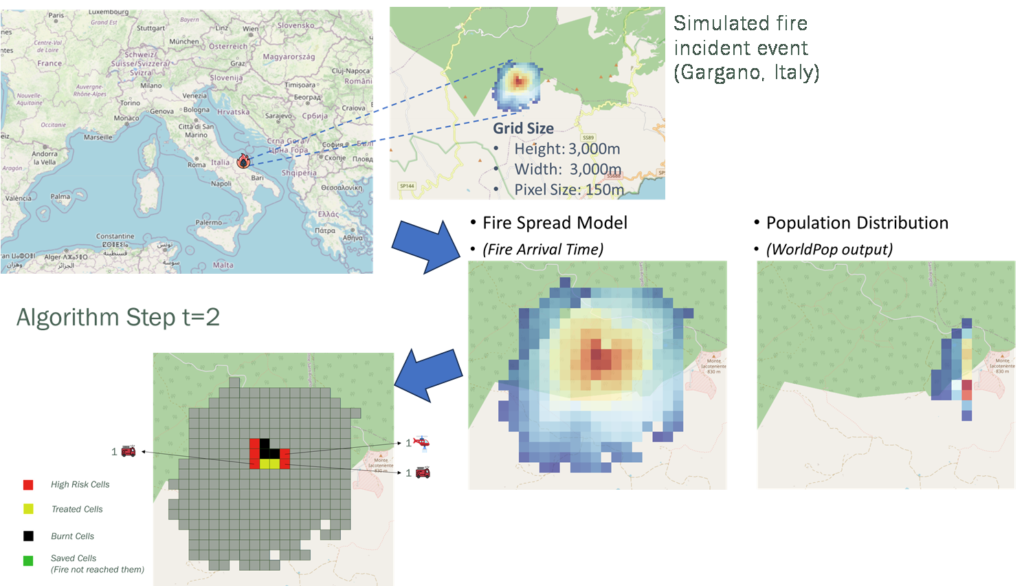Resource Allocation of Response Teams – SILVANUS DSS
Resource Allocation of Response Teams – SILVANUS-DSS
The main objective of the Resource Allocation of Response Teams component is to assist commanders take optimal decisions regarding the resource allocation of response teams in the field depending on the evolution of a wildfire incident and the status of the available response teams. For instance, it may suggest to assign additional teams to a specific area that is at high-risk (where “risk” will be defined below).
The main goal is to perform an optimization process for the coverage of the area under consideration and the use of the available resources upon the data collected by the monitoring components. Hence, the proposed platform is aligned with the real needs maximizing the adopted mitigation actions.
The main inputs of the process are the fire spread projection, the population distribution, and the initial unit distribution, as well as additional parameters that may contribute to the impact of a specific area that may be affected by the approaching fire front (e.g. valuable infrastructure) and the properties of different types of fire-fighting units (e.g. capacity, cost of operation etc.). The output is a newly proposed unit distribution taking into account these inputs.
Obviously, there are many parameters that need to be taken into account in this process raising the need to address the trade-offs when trying to optimize the unit resource allocation leading to a multi-objective optimization problem. Thus, the resource optimization process is a mathematical model developed for management of wildfires with the objective, first to minimize the number of people that may be exposed to risk (and above all life loss) in the high-risk areas and second, to minimize the total cost of fire containment and property losses. The model optimizes the resource allocation decisions given limited capacity and availability while considering the fire spread model and the population distribution.
